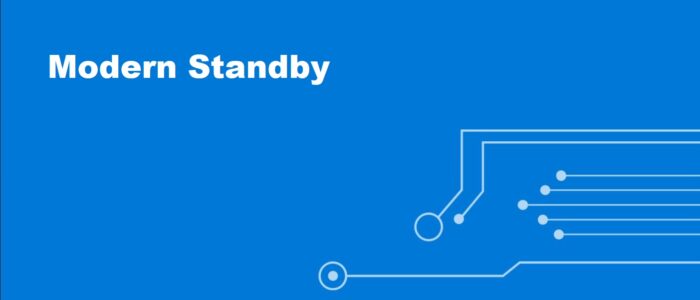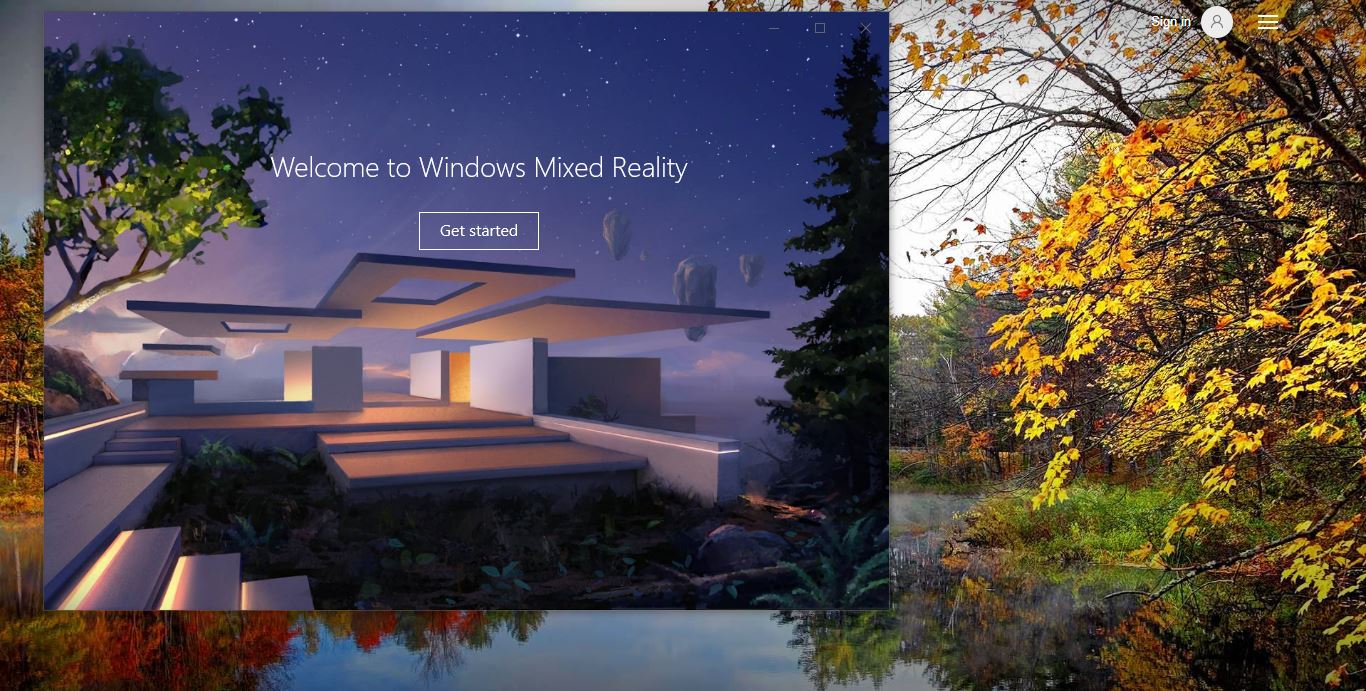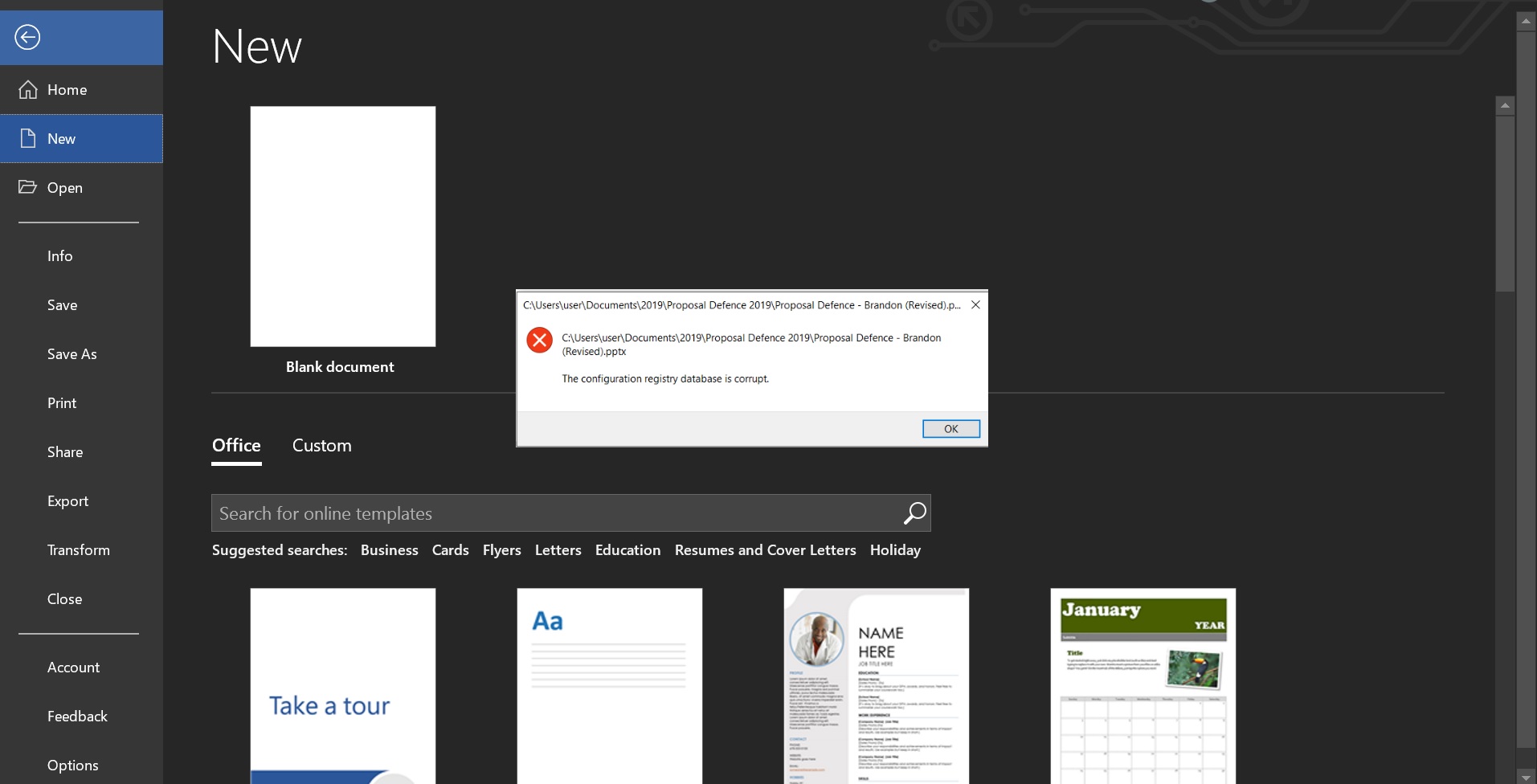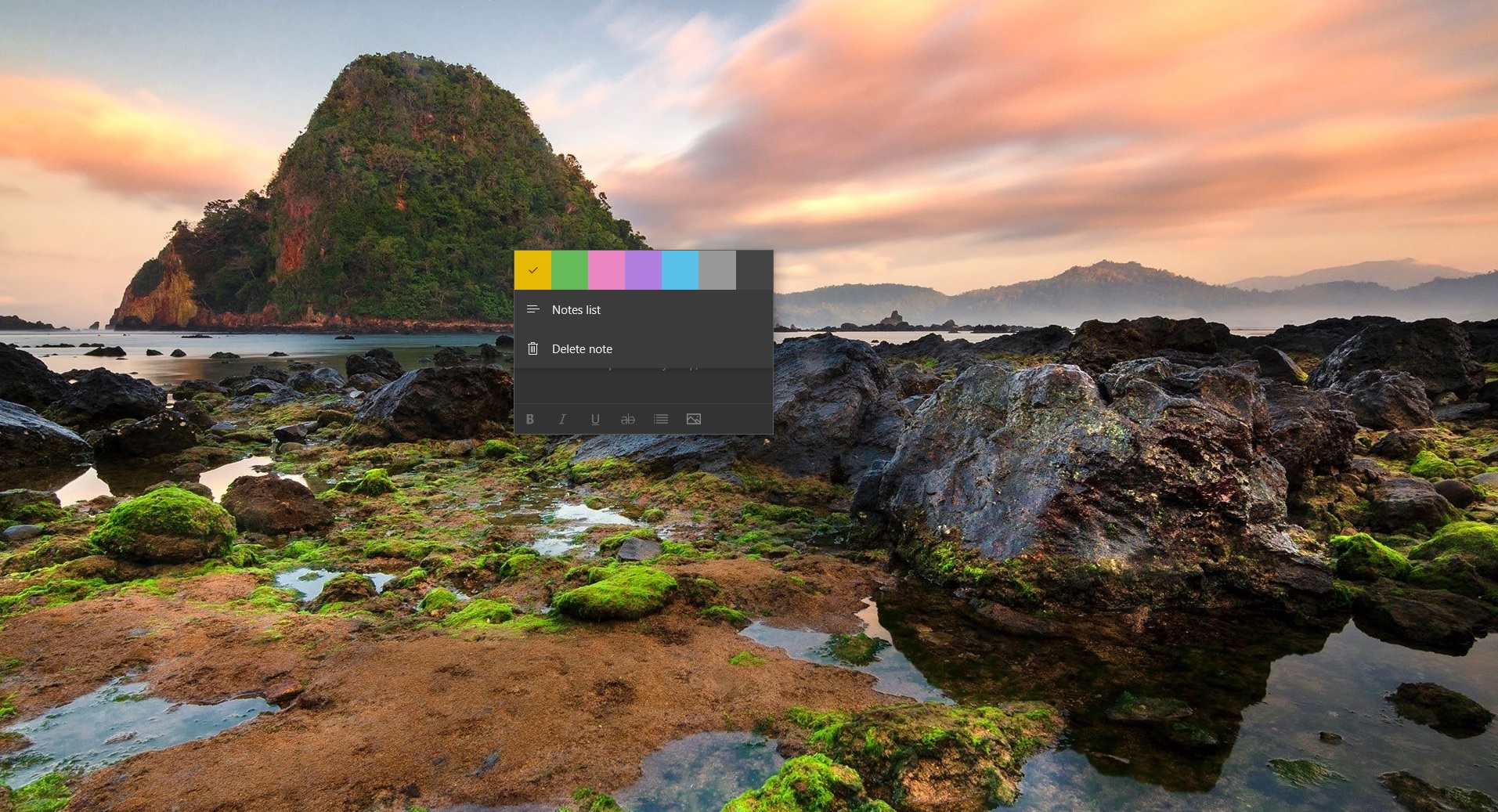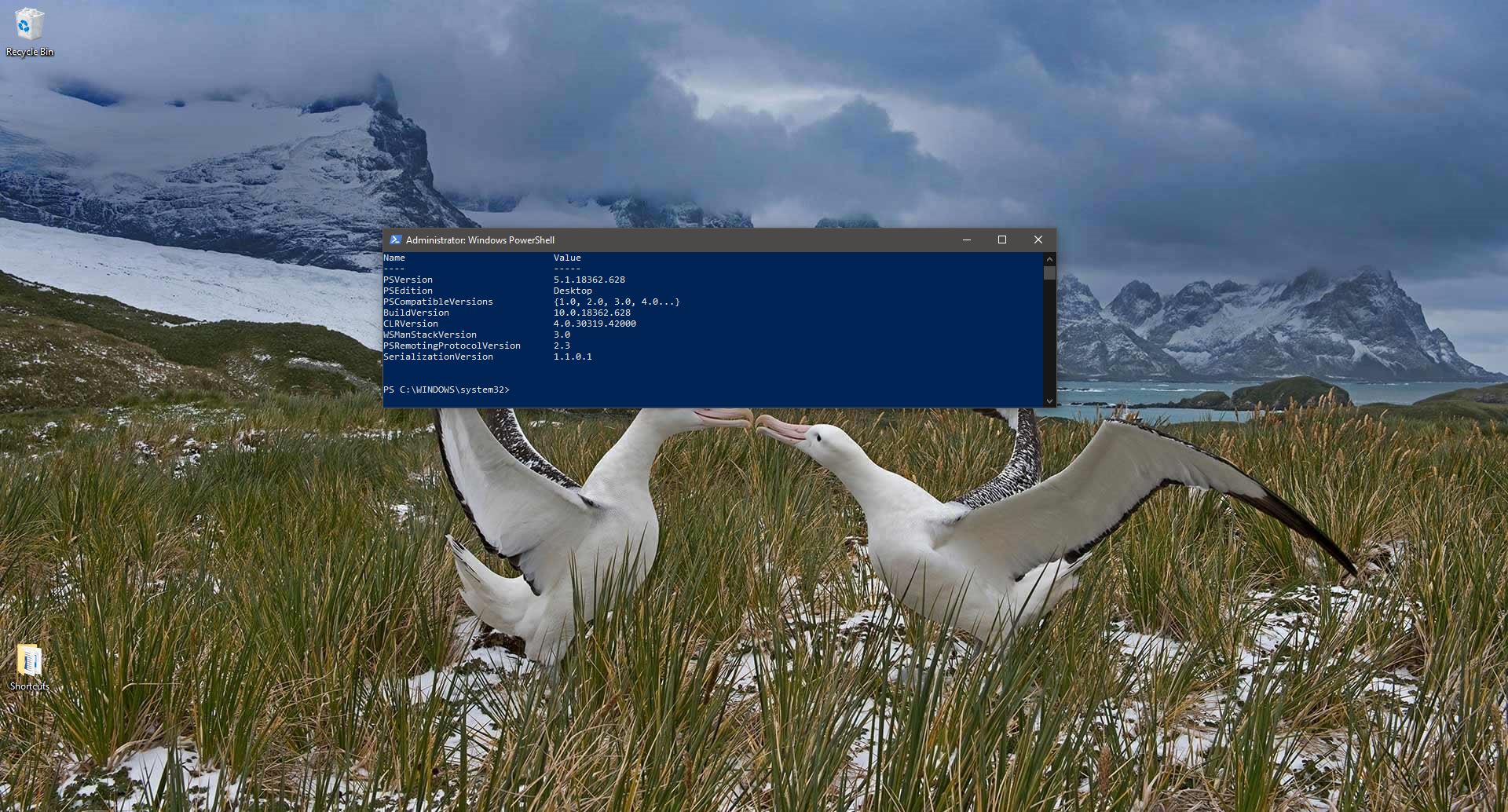Windows 10 Modern Standby is the Power mode which expands the windows 8.1 Connected Standby Power mode. Before Proceeding to the topic, you need a basic understanding of windows system power states and about connected Standby Power Mode. Let’s jump into the topic. If you are a windows user then you must aware of sleep, hibernation, Restart (Soft off), and Shutdown. These are known as the System Power States. A typical PC or Mac with an Intel or AMD chip has different types of power states, In Laptop, you experience Sleep mode, when you close the lid the laptop immediately enters into sleep mode, In sleep mode, your Computer maintains power to its memory so that it can start up very quickly. Next, if you leave your computer for a while then your system automatically switches to hibernation mode. In hibernation, your PC saves all the contents and your work of its memory to the hard drive and shutdown. Next time when you boot your system it loads the system state back from the hard drive and restores everything you have open.
This shows that both sleep and hibernation is used to allow your computer to save its current state and get back to it more quickly when booting it again. These modes utilize very low power or you can say the computer is basically off. At these modes, your computer can save its current state but it can’t update or do anything. To overcome this Microsoft introduce connected standby, think about smartphones and tablets. Nowadays everyone holding smartphones or tablets. If you let your smartphone either it’s android or iPhone for a certain amount of time. The screen turns off automatically and the device goes into very low-power mode. At this mode, your smartphones or tablets will receive notifications, emails, and other apps tasks. This mode is not like windows PCs sleep or hibernation.
Smartphones or tablets at this low-power mode receives notification, this mode does this by frequently waking up the phone and checking for any changes, and putting the phone back to the hibernation mode so you never have to wait for your smartphones to boot. Microsoft did the same thing to PCs connected standby is a low power state that allows windows 8 and windows 8.1 to function more like a smartphone or tablet. Also its supports on Windows RT devices like the Surface RT and Surface 2, but Intel is also working on adding support for Connected Standby to its own CPUs so Intel-powered tablets can catch up to ARM devices. Your PC will work more like your phone.
And as I mentioned above Windows 10 Modern Standby is the Power mode that expands the windows 8.1 Connected Standby Power mode. Before proceeding further you need to understand about system Power States. System power states describe the power consumption of the system as a whole. The operating system supports six system power states, referred to as S0 (fully on and operational) through S5 (power off). Find the Power state-level chart below.
| Power state | ACPI state | Description |
| Working | S0 | The system is fully usable. Hardware components that are not in use can save power by entering a lower power state. |
| Sleep (Modern Standby) | S0 low-power idle | Some SoC systems support a low-power idle state known as Modern Standby. In this state, the system can very quickly switch from a low-power state to high-power state, so that it can respond quickly to hardware and network events. Systems that support Modern Standby do not use S1-S3. |
| Sleep | S1 S2 S3 | The system appears to be off. Power consumed in these states (S1-S3) is less than S0 and more than S4; S3 consumes less power than S2, and S2 consumes less power than S1. Systems typically support one of these three states, not all three. In these states (S1-S3), volatile memory is kept refreshed to maintain the system state. Some components remain powered so the computer can wake from input from the keyboard, LAN, or a USB device. Hybrid sleep, used on desktops, is where a system uses a hibernation file with S1-S3. The hibernation file saves the system state in case the system loses power while in sleep.[!Note] SoC systems that support modern standby (the low-power idle state) do not use S1-S3. |
| Hibernate | S4 | The system appears to be off. Power consumption is reduced to the lowest level. The system saves the contents of volatile memory to a hibernation file to preserve system state. Some components remain powered so the computer can wake from input from the keyboard, LAN, or a USB device. The working context can be restored if it is stored on nonvolatile media. Fast startup is where the user is logged off before the hibernation file is created. This allows for a smaller hibernation file, more appropriate for systems with less storage capabilities. |
| Soft Off | S5 | The system appears to be off. This state is comprised of a full shutdown and boot cycle. |
| Mechanical Off | G3 | The system is completely off and consumes no power. The system returns to the working state only after a full reboot. |
What is Modern Standby Power Mode?
From the above chart, I hope you understand about Power states and their detailed description. The first iteration of Modern standby was called connected standby and it first introduced in Windows 8 and Modern Standby expands the windows connected standby concept and it allows more flexibility in component sections. Connected standby supports windows surface tabs, and windows mobiles with X86, X64, and ARM processors, Modern standby expands and supports windows laptops, tabs, and windows mobile devices. This Modern standby windows feature will be automatically enabled if the device meets all the hardware and firmware requirements. From the above chart, you can see that modern standby supports the new low power state S0. Low Power State is not like traditional power state S3 (Advance sleep mode) in S3 the device is not active a modern standby device remains active when the screen is off but in a much lower power state than S3 to accept phone calls, receive messages, and alert you. Windows 10 will continues to support two power Models S3 and Modern standby.
Type of Mode available in Modern standby:
Modern standby support two modes Connected and Disconnected Standby.
Connected Standby: In connected standby, the system is connected to the network either LAN or Wi-Fi and this network triggers the device to wake. This mode will offer a complete smartphone experience on your laptop. Once you connected the device to the network-connected standby enables end-users to stay connected to email, social networks, VOIP, and receive push notifications in standby.
Disconnected Standby: If your laptop has limited connectivity then modern standby enabled disconnected standby which enables fast wake sources that are not available on S3 devices. You can continue listening to music and casting after entering standby.
Modern Standby Hardware Compatibility:
If the storage is SSD only and with WLAN offload capable then connected modern standby will give the best overall storage performance, lowest power consumption, and highest reliability, and it receives network events all the time. If the storage is hybrid only with WLAN offload capable then the hardware support will be connected modern standby w/ Hybrid, this gives the benefits of the best trade-off of storage cost, performance and capacity receive network events all the time. Will make it simple if your system configuration contains SSD or HDD and NIC are connected, which can offload then your system automatically enables Connected Standby mode, If it is a rotational media (Only HDD) then it will use the Disconnected Mode. Find the Chart below for a better understanding which is taken from Channel 9 Presentation on Modern Standby overview
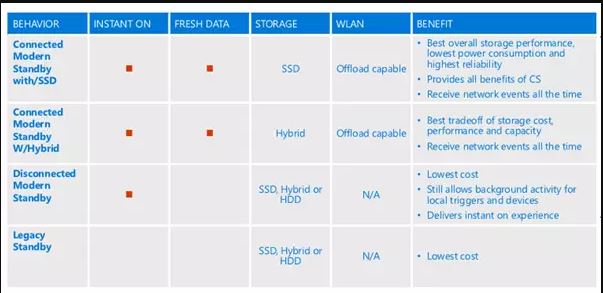
I hope this article will give a clear understanding about Modern standby.
Source: Microsoft Docs & Channel 9 Presentation.
Read Also:
How to Disable Modern Standby in Windows 11/10?

